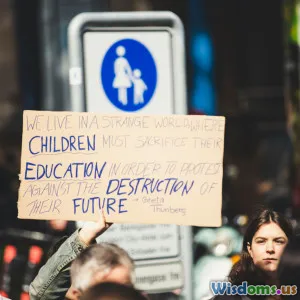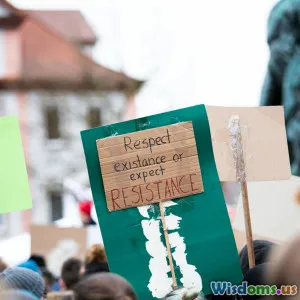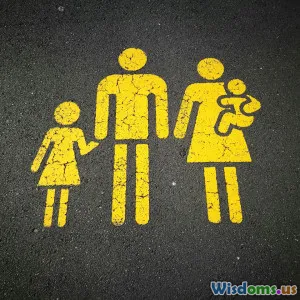
Social Media and Its Impact on Community Identity
9 min read Explore how social media shapes community identity in modern society, transforming connections and cultural belonging. (0 Reviews)
Social Media and Its Impact on Community Identity
In the digital age, social media has revolutionized the way communities form, evolve, and express themselves. Gone are the days when community identity was strictly tied to geographical boundaries or shared physical spaces. Today, platforms such as Facebook, Twitter, Instagram, and TikTok have transformed the fabric of social interaction, affecting cultural norms, social values, and collective identities on a global scale.
Introduction: The Digital Pulse of Community
Imagine a world where your community is no longer confined by city limits or neighborhood lines but instead thrives across continents, connected by screens and shared digital experiences. This is the new reality shaped by social media. The platforms provide unprecedented opportunities for individuals to define and engage with communities that resonate with their interests, values, and cultural backgrounds.
However, the impact runs deeper than mere connection—the digital ecosystem profoundly influences how people perceive themselves within communities and how communities collectively forge their identities.
The Evolution of Community Identity in the Social Media Era
From Local Neighborhoods to Digital Nations
Historically, community identity depended heavily on proximity and face-to-face interactions. Cultural rituals, local practices, and shared histories anchored collective identity within physical spaces. Social media has broadened these parameters, allowing communities based on niche interests, beliefs, or cultural traits to transcend geography.
For example, the global K-pop fandom illustrates this transformation vividly. Despite members living in different countries, fans of K-pop artists form tightly knitted, highly active online communities. They share cultural exchanges, language learning, insights about Korean traditions, and even mobilize for charitable causes inspired by their fandom. Such communities exhibit robust identities, often comparable in strength to traditional geographic communities.
Shaping Identity Through User-Generated Narratives
Social media empowers users not just to consume culture but to create and shape it actively. Platforms encourage content generation—videos, memes, stories—that reflect collective viewpoints and individual experiences. These user-generated narratives become cornerstones for community identity.
Consider TikTok, where trends and challenges circulate rapidly, allowing marginalized communities to express cultural identity, activism, and social commentary. The #BlackLivesMatter movement leveraged social media brilliantly, creating a worldwide community grounded in shared values and activism despite diverse geographic origins.
Positive Impacts on Community Identity
Amplification of Marginalized Voices
One of social media's most significant contributions is giving visibility to voices often excluded from mainstream discourse. LGBTQ+ communities, for instance, use platforms like Twitter and Instagram to create safe spaces, celebrate pride, and raise awareness about social issues.
These digital communities foster a sense of belonging and mutual support that might be difficult to find in some physical environments. They redefine norms and expand understandings of identity beyond traditional frameworks.
Bridging Cultural Gaps and Enriching Identities
Social media facilitates cultural exchange like never before. Platforms enable users to access diverse perspectives, languages, and traditions, enriching individual and community identities.
For instance, digital storytelling and live-streaming allow indigenous communities worldwide to preserve and share traditions with younger generations and global audiences, strengthening cultural identity and resilience.
Mobilization and Social Cohesion
Communities online often translate digital solidarity into real-world action. Social movements fueled on social media—such as the Women’s March or climate activism groups—demonstrate how community identity can spur collective mobilization for societal change.
Challenges and Risks: When Social Media Shapes Identity Negatively
Fragmentation and Echo Chambers
While it can unify, social media also risks fragmenting societal cohesion. Algorithms tend to curate content based on user preferences, unintentionally creating echo chambers where opposing viewpoints are seldom encountered.
These digital silos reinforce pre-existing biases and can polarize communities rather than foster nuanced understanding or shared identities.
Performative Identities and Authenticity Concerns
The curated nature of social media content sometimes leads to performative expressions of identity. Communities might develop superficial cohesion around appearances or trends rather than substantive cultural or emotional bonds.
This performativity can dilute genuine community engagement, reducing identity to consumption patterns or viral trends.
Online Harassment and Exclusion
Marginalized groups, though empowered online, also face significant harassment, trolling, and exclusion efforts. The threat of digital violence can discourage authentic self-expression and community participation, undermining identity formation.
For example, hate speech against ethnic or religious digital communities remains a persistent problem, raising concerns about online safety and inclusion.
The Road Ahead: Cultivating Healthy Digital Communities
Designing for Diversity and Inclusion
To maximize social media's positive impact on community identity, platforms must prioritize algorithms and policies that promote diversity, inclusiveness, and respectful discourse.
Interventions include filtering hate speech, encouraging cross-community dialogues, and empowering marginalized voices with clearer moderation and community guidelines.
Educating Users on Digital Literacy
Users should be equipped with digital literacy skills enabling critical evaluation of online content and awareness of algorithmic biases. This knowledge enhances meaningful participation and can minimize polarization.
Supporting Hybrid Communities
Social media should be viewed as complementary, rather than replacement spaces for community identity. Facilitating offline connections through online initiatives can help maintain balanced and holistic community bonds.
For example, local Facebook groups coordinating neighborhood events or cultural festivals display effective synergy between digital and physical identities.
Conclusion: A Dynamic New Chapter in Community Identity
Social media is a powerful, complex force reshaping community identity across the globe. It offers vibrant new possibilities for cultural expression, activism, and belonging but also presents challenges such as fragmentation and authenticity dilemmas.
Understanding this dynamic landscape is pivotal for individuals, communities, and platforms alike to harness social media’s potential responsibly. By fostering inclusive, authentic, and engaged digital spaces, we can enrich the tapestry of community identity for the modern world.
References & Further Reading:
- boyd, d. (2014). It's Complicated: The Social Lives of Networked Teens. Yale University Press.
- Jenkins, H. (2006). Convergence Culture: Where Old and New Media Collide. NYU Press.
- Pew Research Center. (2021). Social Media Use in 2021.
- Matrix, S. & Bruckman, A. (2014). Cruel, Mean, and Bad: The Ethics of Online Harassment. Journal of Digital Ethics.
- Freelon, D., McIlwain, C. D., & Clark, M. (2016). Beyond the Hashtags: #Ferguson, #BlackLivesMatter, and the Online Struggle for Offline Justice. Center for Media & Social Impact.
Social media's role in community identity is unmistakable and a defining feature of contemporary culture and society. Embracing its complexity lets us build better, more inclusive digital futures.
Rate the Post
User Reviews
Popular Posts





















